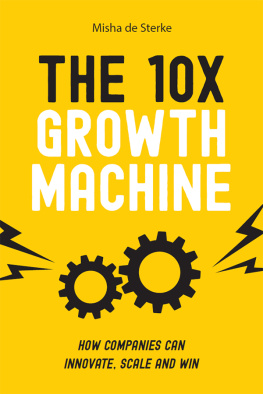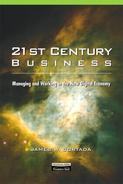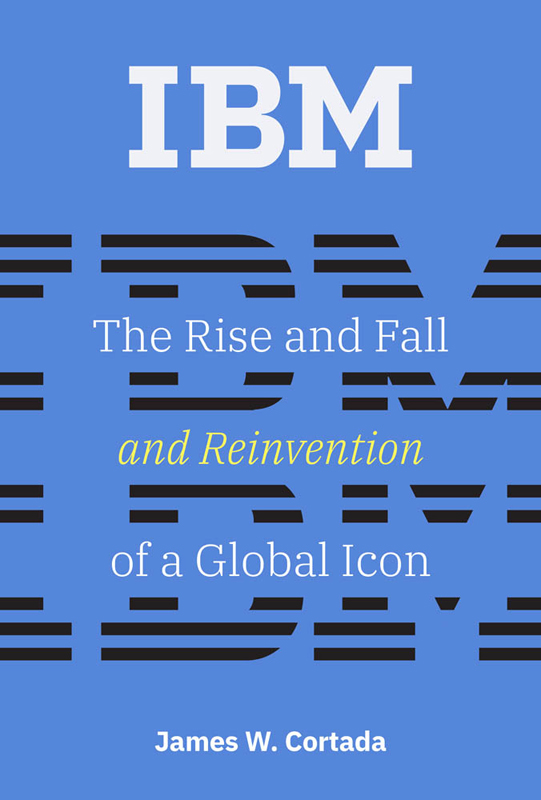Contents
Guide
Pagebreaks of the print version
History of Computing
William Aspray and Thomas J. Misa, editors
Janet Abbate, Gender in the History of Computing: Reimagining Expertise, Opportunity, and Achievement through Womens Lives
John Agar, The Government Machine: A Revolutionary History of the Computer
William Aspray, John von Neumann and the Origins of Modern Computing
William Aspray and Paul E. Ceruzzi, The Internet and American Business
Charles J. Bashe, Lyle R. Johnson, John H. Palmer, and Emerson W. Pugh, IBMs Early Computers
Martin Campbell-Kelly, From Airline Reservations to Sonic the Hedgehog: A History of the Software Industry
Paul E. Ceruzzi, A History of Modern Computing
I. Bernard Cohen, Howard Aiken: Portrait of a Computer Pioneer
I. Bernard Cohen and Gregory W. Welch, editors, Makin Numbers: Howard Aiken and the Computer
James W. Cortada, IBM: The Rise and Fall and Reinvention of a Global Icon
Thomas Haigh, Mark Priestley, and Crispin Rope, ENIAC in Action: Making and Remaking the Modern Computer
John Hendry, Innovating for Failure: Government Policy and the Early British Computer Industry
Marie Hicks, Programmed Inequality: How Britain Discarded Women Technologists and Lost Its Edge in Computing
Michael Lindgren, Glory and Failure: The Difference Engines of Johann Mller, Charles Babbage, and Georg and Edvard Scheutz
David E. Lundstrom, A Few Good Men from Univac
Ren Moreau, The Computer Comes of Age: The People, the Hardware, and the Software
Arthur L. Norberg, Computers and Commerce: A Study of Technology and Management at Eckert-Mauchly Computer Company, Engineering Research Associates, and Remington Rand, 19461957
Emerson W. Pugh, Building IBM: Shaping an Industry and Its Technology
Emerson W. Pugh, Memories That Shaped an Industry
Emerson W. Pugh, Lyle R. Johnson, and John H. Palmer, IBMs 360 and Early 370 Systems
Kent C. Redmond and Thomas M. Smith, From Whirlwind to MITRE: The R&D Story of the SAGE Air Defense Computer
Ral Rojas and Ulf Hashagen, editors, The First ComputersHistory and Architectures
Alex Roland with Philip Shiman, Strategic Computing: DARPA and the Quest for Machine Intelligence, 19831993
Dinesh C. Sharma, The Outsourcer: A Comprehensive History of Indias IT Revolution
Dorothy Stein, Ada: A Life and a Legacy
John Vardalas, The Computer Revolution in Canada: Building National Technological Competence, 19451980
Maurice V. Wilkes, Memoirs of a Computer Pioneer
Jeffrey R. Yost, Making IT Work: A History of the Computer Services Industry
The Rise and Fall and Reinvention of a Global Icon
JAMES W. CORTADA
The MIT Press
Cambridge, Massachusetts
London, England
2019 Massachusetts Institute of Technology
All rights reserved. No part of this book may be reproduced in any form by any electronic or mechanical means (including photocopying, recording, or information storage and retrieval) without permission in writing from the publisher.
This book was set in Adobe Garamond Pro and Berthold Akzidenz Grotesk by Westchester Publishing Services. Printed and bound in the United States of America.
Library of Congress Cataloging-in-Publication Data
Names: Cortada, James W., author.
Title: IBM : the rise and fall and reinvention of a global icon / James W. Cortada.
Description: Cambridge, MA : The MIT Press, [2019] | Series: History of computing | Includes bibliographical references and index.
Identifiers: LCCN 2018023090 | ISBN 9780262039444 (hardcover : alk. paper)
Subjects: LCSH: International Business Machines CorporationHistory. | Computer industryUnited StatesHistory.
Classification: LCC HD9696.2.U6 C67 2019 | DDC 338.7/61004dc23
LC record available at https://lccn.loc.gov/2018023090
To IBMers, customers, and historians who taught me what I know about IBM
Contents
List of Figures
- Charles Flint was highly creative in forming new stock-holding companies, including C-T-R, the core of the future International Business Machines Corporation. Photo courtesy of IBM Corporate Archives.
- Tabulating machine. Herman Holleriths machines were used by U.S. and European census takers and companies in the 1890s and early 1900s. They were considered the most sophisticated data processing equipment of their day. Photo courtesy of IBM Corporate Archives.
- Herman Hollerith, inventor of the tabulating equipment used by governments and corporations for half a century. Photo courtesy of IBM Corporate Archives.
- Thomas J. Watson Sr. in his 40s, when he had taken over C-T-R to shape it into IBM. Photo courtesy of IBM Corporate Archives.
- John H. Patterson was the creator of NCR and had a reputation for being an innovative and successful executive. Photo courtesy of IBM Corporate Archives.
- An early branch office (1927), this one located in Washington, D.C., with its staff. These offices were a combination retail outlet and training center. Photo courtesy of IBM Corporate Archives.
- Number of C-T-R branch openings, 19141924.
- C-T-R/IBM had only two logos until the end of the 1940s. The IBM logo did not become a highly recognized image until the late 1940s, although it was respected earlier by its customers. Photo courtesy of IBM Corporate Archives.
- The IBM Type 405 was sold as a system, not as one product, and was introduced just as IBMs customers volume and complexity of work expanded dramatically. Photo courtesy of IBM Corporate Archives.
- The U.S. government became a massive user of IBM punch cards beginning in the 1930s in support of the Social Security Act. Photo courtesy of IBM Corporate Archives.
- The IBM exhibit at the New York Worlds Fair, 19391940. Photo courtesy of IBM Corporate Archives.
- IBM Mark I. This system gave IBM engineers exposure to the possibilities of advanced electronics. It was the largest calculator built in the United States before the arrival of the computer. Photo courtesy of IBM Corporate Archives.
- IBM 604. The success of the IBM 604 convinced many executives that advanced electronics was the wave of the future, including Thomas Watson Jr., who would lead the charge into computing. Photo courtesy of IBM Corporate Archives.
- Arthur Watson in uniform. Arthur is the lesser known of the Watson boys. It was during his military service that he, like his brother, matured before assuming significant responsibilities at IBM. Photo courtesy of IBM Corporate Archives.
- The IBM 704 computer established IBM as a serious supplier of digital computing for commercial users, suggesting that business uses would expand. Photo courtesy of IBM Corporate Archives.
- IBMs 650 computer was its most successful data processing product of the late 1950s. Mass-produced and widely accepted by customers, it solidified IBMs lead in the computer industry. Photo courtesy of IBM Corporate Archives.
- The IBM 305 Disk Storage Unit made it possible for data processing users to access data directly, making online systems possible in the 1960s. The device was also known as RAMAC. Photo courtesy of IBM Corporate Archives.







